Top Tips for Buying the Right Speed Boat This Year
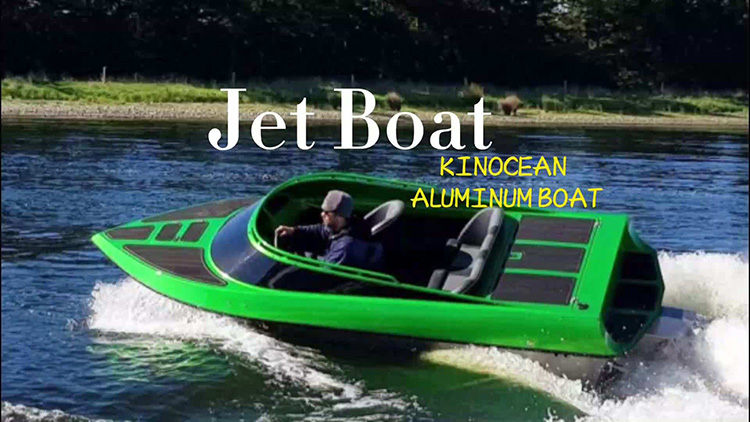
Buying a speed boat is a big decision, and getting it right can make all the difference in your time on the water.
Whether you're planning to cruise, fish, or race, choosing the right speed boat means finding one that fits your lifestyle.
A small boat might suit solo adventures, but a larger one could be perfect for family outings.
Think about how you'll use it most often. For instance, water skiing speeds vary—young skiers need slower speeds around 10 MPH, while experienced ones might go up to 35 MPH.
Assessing your needs carefully ensures you don’t just buy a boat but the right one for you.
Budget, size, and features also matter. Take time to research and weigh your options. After all, this isn’t just a purchase; it’s an investment in unforgettable memories on the water.
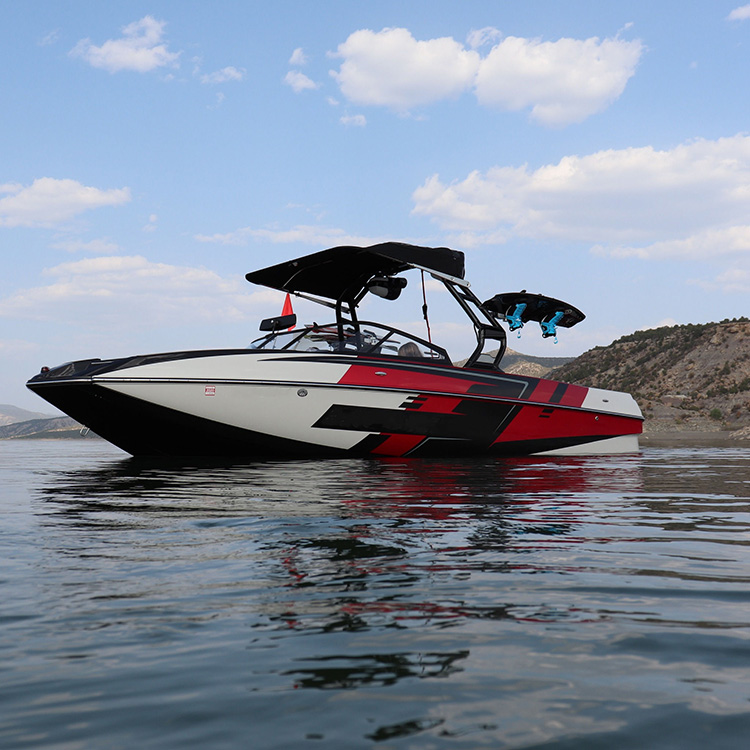
Key Takeaways
Think about why you need a boat before buying. Will you use it for relaxing, fishing, or racing?
Make a budget that covers more than the price. Include costs like repairs, gas, insurance, and storage.
Look into payment plans if you can’t pay all at once. Check different lenders to get the best deal.
Decide if you want a new or used boat. New boats have warranties and cool features. Used boats cost less money.
Pick the right size for your needs. Small boats are good for one person. Medium boats work for families. Big boats are great for parties.
Focus on safety. Always have life jackets, a first aid kit, and emergency tools.
Check used boats carefully or hire an expert. This helps you avoid expensive problems later.
Try out different boats to see which one you like. Driving them yourself helps you choose the best one.
Budgeting for Your Speed Boat
Buying a speed boat starts with knowing your budget.
It’s easy to get excited by shiny models, but planning your spending helps avoid money problems later.
A clear budget lets you enjoy your boat stress-free.
Setting a Realistic Budget
Decide how much you can spend on the boat itself. Prices range from £5,000 for used ones to over £400,000 for luxury models.
That’s a big difference! Pick a price that works for your finances.
Don’t forget extra costs like repairs, fuel, storage, and insurance. These can add up fast if you’re not ready.
Here’s a simple checklist for your budget:
Cost of buying the speed boat
Repairs and upkeep expenses
Fuel and docking fees
Insurance payments
Storage costs
Some people use the “10% rule.”
They save 10% of the boat’s price each year for repairs and other costs. This helps avoid surprise bills.
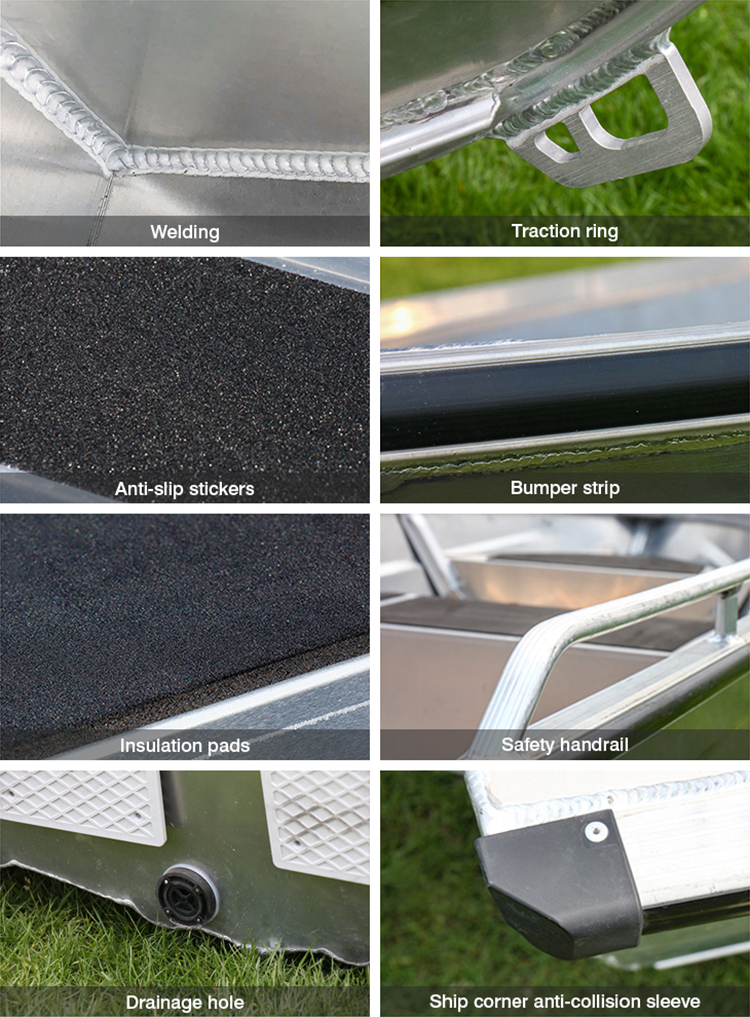
Accounting for Additional Costs
Owning a speed boat means more than just buying it.
There are other costs you need to plan for.
Maintenance and Repairs
Boats need regular care to stay in good shape. Cleaning, fixing parts, and engine checks all cost money.
You might spend about 10% of the boat’s value each year.
For example, a $50,000 boat could need $5,000 yearly for upkeep.
Insurance and Registration
Insurance is important to protect your boat. Costs depend on the boat’s value, where you live, and how you use it.
Registration fees also vary by location. Check local rules to know what you’ll pay.
Fuel and Storage
Fuel can be pricey, especially for bigger boats with strong engines. Some boats use hundreds of liters per hour, so plan for this cost.
Storage is another expense. Marina slips or land storage can cost $2,000 to $6,000 yearly, depending on the location.
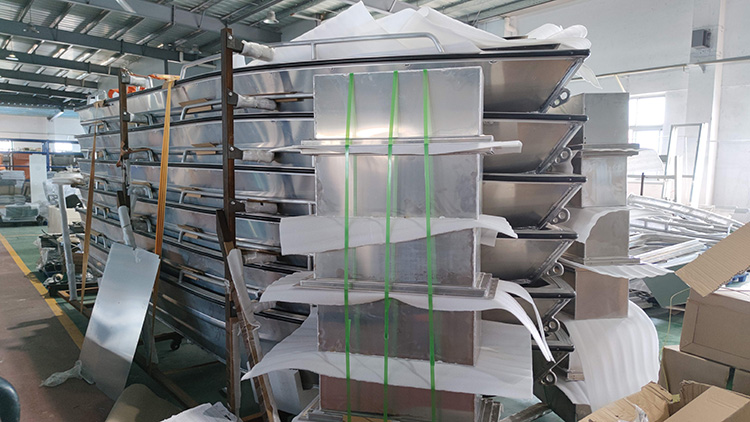
Exploring Financing Options
If you can’t pay for a boat upfront, financing can help. There are different ways to finance a boat, each with pros and cons.
Financing Option | What It Offers |
|---|---|
Specialized Loans | Loans made for boats and RVs, with longer repayment times. |
Dealer Financing | Easy option at the dealership; compare rates with other lenders. |
Traditional Bank Loans | Often have good interest rates and terms. |
Loan terms can last 2 to 20 years, based on the boat’s cost. Interest rates are usually between 5.24% and 9.74%.
Your credit score and income affect the rate. Some lenders, like Trident Funding, offer loans starting at $25,000 with rates as low as 6.74%.
Compare lenders to find the best deal.
Pro Tip: Before getting a loan, add up all costs like monthly payments, insurance, and repairs. This helps you see what you can afford.
By planning your budget, thinking about extra costs, and checking financing options, you’ll be ready to buy the right speed boat.
Take your time to plan—it’s worth it for your happiness and lifestyle!
New vs. Used Speed Boats
When it comes to buying a speed boat, one big question pops up: should you go for a shiny new model or a pre-loved one?
Both options have their perks and downsides, so let’s break it down to help you decide.
Benefits of Buying New
Warranty and Reliability
Buying a new speed boat feels like unwrapping a gift.
Everything is fresh, untouched, and under warranty.
If something goes wrong, the manufacturer usually covers it. That peace of mind is priceless, especially when you’re out on the water.
Plus, new boats are less likely to have hidden issues.
You won’t have to worry about surprise repairs or worn-out parts.
Latest Features
New boats come packed with the latest technology and features. From advanced GPS systems to sleek entertainment setups, they’re designed for modern convenience.
High-performance boats often boast cutting-edge engines that deliver incredible speed and efficiency.
If you’re someone who loves staying ahead of the curve, the benefits of a new boat are hard to ignore.
Drawbacks of Buying New
Higher Costs
Let’s face it—new speed boats don’t come cheap. They can cost significantly more than used ones, even for similar models.
If you’re on a tight budget, this might be a dealbreaker. And don’t forget, the price tag doesn’t include extras like insurance, storage, and maintenance.
Depreciation
Here’s the kicker: new boats lose value fast. In the first three years, they can depreciate by 25%. After that, the rate slows to about 4% per year.
Compare that to used boats, which have already taken the biggest depreciation hit. They tend to hold their value better over time.
Age of Boat | Depreciation Rate |
|---|---|
New (0-3 years) | 25% in first 3 years, then 4% per year |
Used (2-3 years) | 50-70% overall depreciation |
If you’re thinking long-term, this is something to keep in mind.
Benefits of Buying Used
Cost Savings
Used speed boats are a fantastic way to save money. You can often find high-performance boats at a fraction of their original price.
Since they’ve already depreciated, you’re getting more bang for your buck.
This means you can afford a larger or more powerful boat without breaking the bank.
More Model Options
Shopping for a used boat opens up a world of possibilities.
You’ll find models that are no longer in production, giving you access to unique designs and features.
Whether you’re looking for a classic style or a specific performance level, the used market has something for everyone.
Pro Tip: Always inspect a used boat thoroughly or hire a professional to do it. This ensures you’re not surprised by hidden issues later.
Drawbacks of Buying Used
Buying a used speed boat can save you money, but it’s not all smooth sailing. Let me walk you through some of the challenges you might face.
Hidden Issues
When you buy a used boat, you don’t always know its full history. The previous owner might not tell you everything.
Maybe the engine has been repaired multiple times, or the hull has unseen damage. These hidden issues can turn into expensive surprises later.
I’ve heard stories of people who bought a used boat, only to find out it had water damage or electrical problems.
Fixing these can cost thousands of dollars. That’s why I always recommend a thorough inspection before buying.
You can hire a marine surveyor to check the boat inside and out. They’ll look for things like cracks, leaks, and engine wear.
Pro Tip: Ask for maintenance records. A well-documented history can give you peace of mind and help you avoid nasty surprises.
Limited Warranty
Another downside of buying used is the lack of a warranty. Most used boats don’t come with one, which means you’re on your own if something breaks.
New boats usually have warranties that cover repairs for a few years, but with a used boat, you take on all the risks.
This doesn’t mean you should avoid used boats altogether. The benefits of a used boat, like cost savings and more options, can still make it a great choice. But you need to be prepared for the possibility of extra repair costs.
If you’re lucky, you might find a used boat that still has some warranty left. Some manufacturers allow warranties to transfer to new owners, but this isn’t always the case. Be sure to ask about it when you’re shopping around.
Note: Without a warranty, it’s even more important to have a trusted mechanic inspect the boat before you buy it.
Buying used can be a smart move, but it’s not without risks. By doing your homework and taking precautions, you can avoid most of the common pitfalls.
Choosing the Right Size for Your Speed Boat
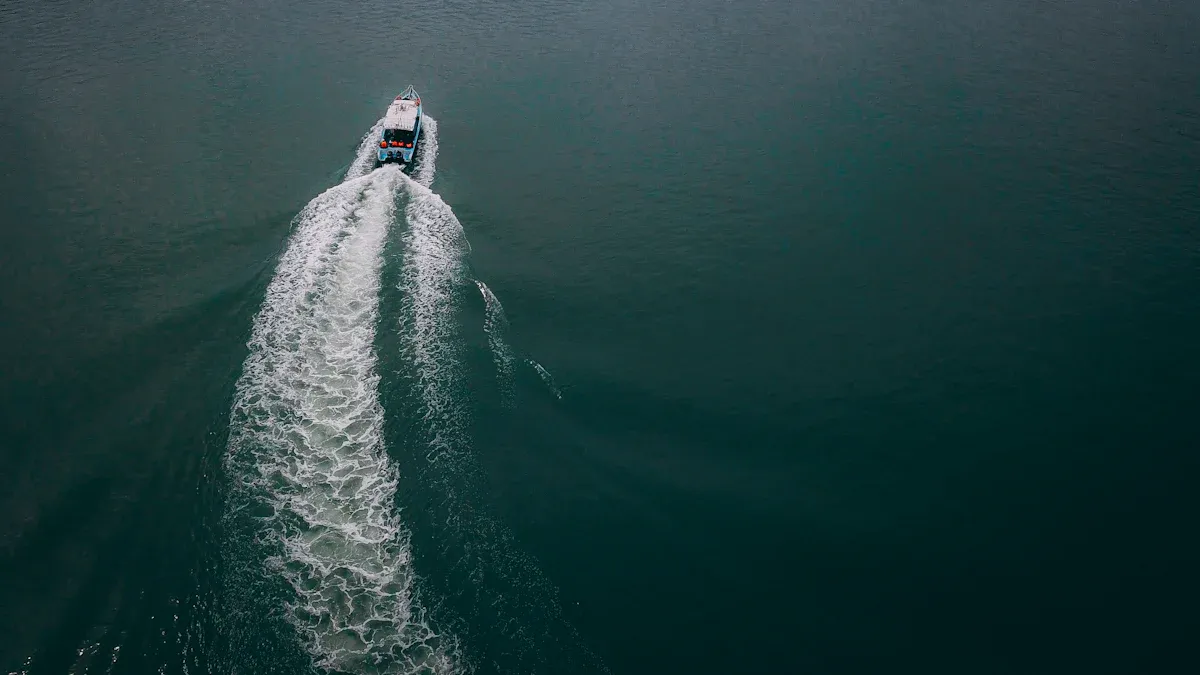
Choosing the right size for your speed boat is a big deal. Trust me, I’ve seen people pick the wrong size and regret it later. It’s not just about how the boat looks; it’s about how it fits your lifestyle. Let’s break it down so you can make the best choice.
Small Speed Boats
Best for Solo or Couple Use
If you’re someone who loves solo adventures or quiet outings with a partner, a small speed boat might be your best bet. These boats are compact and easy to handle. I’ve taken a few out myself, and they’re perfect for zipping across the water at high speed. They’re also great for activities like fishing or short cruises. The smaller hull makes them super responsive, so you can maneuver them easily, even in tight spaces.
But here’s the thing: small boats usually have limited seating and storage. If you’re planning to bring friends or gear, you might feel cramped. So, think about how you’ll use it most often.
Easy to Store and Transport
One of the best things about small speed boats is how easy they are to store and transport. You don’t need a massive trailer or a big driveway. I’ve seen people store these boats in their garages! Plus, towing them is a breeze. A regular SUV or truck can handle it without breaking a sweat.
If you’re new to boating, starting with a small boat can make life easier. You’ll spend less time worrying about logistics and more time enjoying the water.

Medium Speed Boats
Ideal for Families or Groups
Medium speed boats strike a great balance. They’re big enough to fit your family or a group of friends but not so large that they’re hard to manage. I’ve taken medium-sized boats out for family outings, and they’re fantastic for creating memories. With a larger hull, they offer more stability, which is great if you’ve got kids or first-time boaters on board.
These boats usually have more seating and storage, so you can pack snacks, life jackets, and even fishing gear. They’re versatile, making them a solid choice for most people.
Balanced Space and Performance
Medium boats give you the best of both worlds. They’re spacious enough to feel comfortable but still deliver impressive speed. I’ve hit some serious speeds on these boats, and they handle beautifully. The hull design often balances performance and comfort, so you don’t feel like you’re sacrificing one for the other.
If you’re looking for a boat that can do a bit of everything—cruising, fishing, or even water sports—a medium-sized speed boat is worth considering.
Large Speed Boats
Great for Entertaining
Large speed boats are the ultimate choice for entertaining. If you love hosting parties or taking big groups out on the water, this is the size for you. I’ve been on a few, and they’re like floating living rooms. You’ll find plenty of seating, a spacious hull, and even extras like built-in coolers or sound systems.
These boats are perfect for leisurely cruises or anchoring at a sandbar for the day. Just keep in mind that they’re not built for extreme speed. They’re more about comfort and luxury than racing across the waves.
Higher Maintenance Needs
Here’s the trade-off: large boats come with higher maintenance needs. The bigger the hull, the more cleaning and upkeep it requires. Plus, storing and transporting them can be a challenge. You’ll likely need a marina slip, which adds to the cost.
But if you’re okay with the extra work, a large speed boat can be a fantastic investment. It’s all about what you value most—speed and simplicity or space and comfort.
Pro Tip: Always consider sizing carefully. Think about how many people you’ll bring, where you’ll store the boat, and how much maintenance you’re willing to handle.
Determining Your Speedboat Usage
When it comes to picking the right speedboat, understanding how you’ll use it is key. I’ve seen people buy boats without thinking about their main purpose, and they often regret it. Let’s dive into the different ways you might use your boat and what features to look for.
Leisure and Cruising
Focus on Comfort and Handling
If you’re all about relaxing on the water, a boat designed for leisure and cruising is your best bet. I’ve taken these boats out for sunset rides, and they’re perfect for unwinding. Look for comfortable seating, smooth handling, and a stable ride. You don’t need extreme speed here—just enough to glide across the water effortlessly. Features like padded seats, cup holders, and a quiet engine can make your cruising experience even better. Trust me, comfort is everything when you’re out for a peaceful day on the water.
Fishing
Storage and Stability
Fishing boats are a whole different game. If you’re like me and love spending hours casting a line, you’ll need a boat with plenty of storage for your gear. Rod holders, tackle compartments, and live wells are must-haves. Stability is another big factor. A stable boat makes it easier to stand and reel in your catch without worrying about tipping over. I’ve been on boats that felt wobbly, and it’s not fun when you’re trying to focus on fishing. Choose a design that prioritizes balance and has enough room for all your equipment.
Racing and High-Speed Activities
Engine Power and Lightweight Design
For thrill-seekers, speed is the name of the game. Racing boats are built for high-speed activities, and they’re all about performance. I’ve raced a few, and the adrenaline rush is unbeatable. Look for a powerful engine and a lightweight design. These boats are made to cut through the water like a knife, giving you maximum speed and agility. Keep in mind, though, that these boats aren’t as versatile as others. They’re built for speed, not comfort or storage. If you’re all about the thrill, this is the way to go.
Pro Tip: Always match your boat’s features to your primary usage. Whether you’re cruising, fishing, or racing, the right boat will make all the difference.
Key Features to Consider in a Speed Boat
Engine Power and Performance
The engine is the most important part of a speed boat. It decides how well your boat performs. A strong and efficient engine makes every trip better, whether you’re racing or cruising.
Here’s what to check:
RPM Range: A good boat engine works best at certain RPMs. For example, speeds of 26 to 30 knots at 4500 to 5000 RPM are smooth and save fuel.
Speed Potential: The sail-area to displacement ratio shows how fast a boat can go. It’s a quick way to understand its power.
Stability and Seaworthiness: These features help the boat handle rough waters. Stability keeps you steady, and seaworthiness ensures safety in bad weather.
Here’s a simple table of performance metrics:
Metric | What It Means |
|---|---|
Sail-area to displacement ratio | Shows how powerful the boat is under sail, helping you know its speed potential. |
Displacement/length ratio | Compares the boat’s weight and length to measure performance. |
Seaworthiness | Checks if the boat can handle different sea conditions safely. |
Stability | Helps keep the boat steady and comfortable during trips. |
Speed under different conditions | Measures how well the boat performs in changing wind and water conditions. |
Choose an engine that balances power and fuel use. A dependable engine means more fun on the water without worrying about problems.
Seating and Layout
Seating and layout might seem small, but they matter a lot. I’ve been on boats where bad seating ruined the fun. A good layout makes everything easier and more enjoyable.
Think about how you’ll use the boat. For family trips, pick one with roomy seating. Wraparound seats or flexible layouts are great for hanging out. If you’re fishing, choose a boat with open decks and easy-to-reach storage.
Check the seat materials too. Comfortable and weatherproof seats make long trips better. Some boats even have adjustable seats, which are great for relaxing or being active.
Pro Tip: Test the seats before buying. Sit in all spots to see if they’re comfy and useful.
Storage and Compartments
Storage is super important, even if you don’t think about it at first. I’ve been on boats with no storage, and it’s a hassle. You need space for fishing gear, snacks, and safety items.
Look for boats with smart storage designs. Compartments under seats or in the hull save space and keep the deck clear. Fishing fans should look for rod holders and tackle boxes. For leisure trips, spaces for coolers and personal items are helpful.
Here’s a quick storage checklist:
Under-seat compartments for life jackets and safety gear.
Rod holders for fishing tools.
Cooler storage for food and drinks.
Lockable compartments for keeping valuables safe.
Good storage keeps your boat neat and makes sure you have everything for a fun day on the water.
Safety Features
Emergency Equipment
When it comes to boating, safety should always come first. I’ve learned that having the right safety equipment on board can make all the difference in an emergency. You never know when something unexpected might happen, so it’s better to be prepared.
Here’s a quick list of must-have safety equipment for your speed boat:
Fire Extinguisher: Fires on boats are rare but can happen. A marine-rated fire extinguisher is essential.
First Aid Kit: Accidents like cuts or scrapes are common. A well-stocked first aid kit can handle minor injuries.
Flares and Signaling Devices: If you ever get stranded, flares can help rescuers find you quickly.
Throwable Floatation Device: This is a lifesaver—literally. It’s required on most boats and can help someone who falls overboard.
I always double-check my safety equipment before heading out. It’s a small step that gives me peace of mind.
Life Jacket Storage
Life jackets are non-negotiable. Everyone on board needs one, no matter how good a swimmer they are. I’ve seen situations where a life jacket saved someone’s life, and it’s a reminder of how important they are.
The key is to store them in an easy-to-reach spot. I recommend using a dedicated storage compartment or a hanging rack. This keeps them organized and accessible in case of an emergency. Make sure the jackets are the right size for everyone on board. A poorly fitting life jacket won’t do its job properly.
Pro Tip: Test your life jackets at the start of each season. Check for wear and tear to ensure they’re still effective.
Technology and Add-Ons
GPS and Navigation
A good GPS system is a game-changer for any speed boat. I’ve used GPS to navigate unfamiliar waters, and it’s saved me from getting lost more than once. Modern systems are incredibly accurate and easy to use.
Look for a GPS that offers:
Real-Time Tracking: This helps you know exactly where you are at all times.
Route Planning: Some systems let you plan your trip in advance, which is great for longer outings.
Weather Updates: Staying ahead of bad weather is crucial for safety.
I also recommend pairing your GPS with a depth finder. It helps you avoid shallow areas that could damage your boat.
Entertainment Systems
Let’s be honest—boating is more fun with some good tunes. An entertainment system can turn a regular day on the water into a party. I’ve installed a waterproof sound system on my boat, and it’s one of the best upgrades I’ve made.
Here’s what to look for in an entertainment system:
Waterproof Speakers: These can handle splashes and rain without breaking.
Bluetooth Connectivity: This makes it easy to play music from your phone.
Control Panel: A simple interface lets you adjust the volume or switch tracks without hassle.
Some systems even come with built-in LED lights for nighttime cruising. It’s a small touch that adds a lot of fun to the experience.
Note: Always prioritize safety over entertainment. Keep the volume low enough to hear what’s happening around you.
Buying the right speed boat isn’t just about picking the first one that catches your eye. It’s about understanding your needs, setting a budget, and thinking about how you’ll use it. Whether you’re cruising, fishing, or chasing speed, the right size and features make all the difference.
Before you commit, take the time to test drive a few options. Trust me, nothing beats firsthand experience. And don’t skip the research—it’s the best way to avoid surprises and feel confident in your choice. With the right preparation, you’ll be ready to hit the water and enjoy every moment.
FAQ
What’s the best speed boat for beginners?
If you’re new to boating, start with a small or medium-sized boat. They’re easier to handle and maintain. Look for models with simple controls and good stability. Trust me, you’ll enjoy learning without feeling overwhelmed.
How much does a speed boat cost?
Speed boats range from $5,000 for used models to over $400,000 for luxury ones. It depends on size, features, and condition. Don’t forget to budget for extras like fuel, insurance, and maintenance.
Do I need a license to drive a speed boat?
Most places require a boating license or safety course certification. Check your local laws. It’s not hard to get one, and it keeps everyone safe on the water.
How do I maintain my speed boat?
Regular cleaning, engine checks, and proper storage are key. I recommend servicing it annually and inspecting it after every trip. A little care goes a long way in keeping your boat in top shape.
Can I finance a speed boat?
Yes, many lenders offer boat loans. You can choose from specialized loans, dealer financing, or traditional bank loans. Compare rates and terms to find the best fit for your budget.
What’s the difference between inboard and outboard engines?
Inboard engines sit inside the boat, while outboard engines attach to the back. Outboards are easier to maintain and replace. Inboards offer a cleaner look and better balance. It depends on your preference and usage.
How do I store my speed boat?
You can store it at a marina, in a dry dock, or on your property. If you’re short on space, consider renting a storage unit. Always cover your boat to protect it from weather damage.
What safety gear should I have on board?
Always carry life jackets, a fire extinguisher, a first aid kit, and flares. I also recommend a throwable flotation device and a whistle. Safety gear isn’t optional—it’s essential.
Pro Tip: Keep your safety gear in an easy-to-reach spot. You’ll thank yourself in an emergency.
See Also
Key Considerations When Selecting Your Ideal Fishing Vessel
Essential Advice for Picking the Right Pontoon Boat
Crucial Guidelines for Choosing Your Aluminum Bass Boat
Selecting the Right Aluminum Boat Maker for Your Requirements
